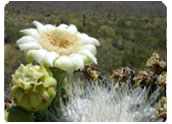WILLIAMSBURG
City Offices
401 Lafayette Street
Williamsburg 757-220-6100
www.williamsburgva.gov
Chamber of Commerce
500 East Main Street
Norfolk 757-622-2312
www.hamptonroadschamber.com
Services
Tourism, hospitality and service trades lead the local economy, joined by a flourishing retail sector and a healthcare facility that delivers leading-edge medical care and advanced technology to the rural corners of the Virginia Peninsula. In addition to the services and specialties available locally at Sentara Williamsburg Community Hospital, regional hospitals such as the 576-bed Riverside Regional Medical Center in Newport News or the Veterans Affairs Medical Center in Hampton are just minutes away. The City of Hampton is also home to one of Sentara’s outstanding hospitals, excelling in high-tech advancements. The Sentara healthcare system is proud of its status as the only system on the East Coast that has been ranked among the best top-integrated healthcare networks in the nation for the past decade.
Area youth receive an outstanding education in public schools, although options for private education are prolific throughout Hampton Roads. Just beyond the front doorstep in Williamsburg, The College of William and Mary has been ranked by U.S. News and World Report as the top public institution in the nation for its commitment to teaching. As historic as the city itself, the College of William and Mary was chartered in 1693 by Great Britain’s King William III and Queen Mary II.
Lifestyle
It is difficult to imagine a more charmed existence than living in the very heart of the Historic Triangle. Williamsburg residents have the opportunity to live, play, or work in an intellectually stimulating environment that fosters progressive ideas and arts while it honors the atmosphere and character of colonial days. Newcomers to this area will be amazed to discover the sights and sounds of an 18th century community. Within the 173-acre historic area formally known as Colonial Williamsburg, visitors and residents can stroll by more than 500 historic buildings. Among the treasures are 88 original houses, taverns, shops, and public buildings — many of which are authentically furnished to reflect their historic legacy.
Without a doubt, Williamsburg residents enjoy a quality of life that is rarely associated with quiet, small-town living. Beyond the excellence achieved by local educational and medical facilities, the city is surrounded by first-rate theme parks, fine restaurants, and internationally famous cultural and historic attractions. As part of the Historic Triangle that encompasses York County and James City County, Williamsburg is convenient to a host of other historic attractions such as Carters Grove or the Shirley and Berkeley plantations.
To walk in the footsteps of the very first settlers, visitors can stroll through the nearby Jamestown Settlement and the Jamestown-Colonial National Historical Park. One of the most stirring sites of the Historic Triangle is Surrender Field in the Yorktown Colonial National Historical Park. Here, the representative of Lord Cornwallis handed his sword to General George Washington, hallowing the site where American independence was officially won in 1781.
Among the contemporary attractions in Williamsburg are two of the Hampton Roads’ finest family destinations. The internationally famous Busch Gardens theme park combines with Water Country USA to create one of the most entertaining complexes in the nation. The entire family will enjoy traveling through six European countries at this sprawling park, where the Old World theme is imaginatively conveyed through land and water rides that include a prize-winning roller coaster, games, and atmospheric landscaping. In addition to the major theme park attractions, the Williamsburg area offers lush parks, spectacular gardens, tennis courts, sports fields, and championship golf courses.
The College of William and Mary lends a cosmopolitan flavor to the city, introducing intellectual stimulation as well as cultural diversity. Like any quality institution of higher education in the heart of a small town, the college introduces a wealth of live theatre productions, exceptional guest lecturers, fascinating workshops, and visual art displays. As rich as these cultural and educational opportunities may be, they are only one facet of the enrichment that the college brings to the community.
The positive and far-reaching influence of the college on Williamsburg as a community is more understandable in light of the city’s demographics. College students make up more than 60 percent of the city’s total population. From fraternities and sororities to individual students, these bright and capable young adults have always been known for maintaining a high level of involvement in community activities. Many of them volunteer time and effort to civic and social programs or serve as tutors in the public school system.
Many of lovely residential communities provide outstanding amenities of their own, such as the planned community of Ford’s Colony, boasting a golf course that has been listed among “America’s Best” by Golf Week magazine. Beautiful, well-kept older homes along quiet, tree-shaded streets harmonize with newer construction to offer a pleasing variety of architectural styles, periods, and price ranges. Serene and relaxing in spite of the tourist traffic, Williamsburg draws many newcomers to its easy pace and historical charm. Considering the unparalleled quality of life available in Williamsburg, it comes as no surprise that the city is experiencing rapid growth and expansion, particularly in the residential sectors.
Many military retirees once stationed in the Hampton Roads area have chosen to return to Williamsburg for its idyllic, tranquil setting. Vacationers sometimes fall in love with the lifestyle and make immediate plans to relocate. Even the world traveler who has experienced a variety of locales finds that nothing quite compares to the charm of
Colonial Williamsburg.
Without a doubt, Williamsburg residents enjoy a quality of life that is rarely associated with quiet, small-town living. Beyond the excellence achieved by local educational and medical facilities, the city is surrounded by first-rate theme parks, fine restaurants, and internationally famous cultural and historic attractions.
Williamsburg
Affectionately known as “CW” by the locals, Colonial Williamsburg represents the most ambitious and certainly one of the finest examples of colonial renovation in the nation. Imagine strolling down the streets and pathways where American political legends like George Washington, Patrick Henry, and Thomas Jefferson once walked and conversed?
Many consider Williamsburg as the place where the seeds of the American Revolution first took root and flourished. The city not only served as the capital of Virginia for more than 100 years, it was a hothouse for political debate and the cradle for the democratic ideals that led to the birth of a bold new nation.
The city of Williamsburg is located on the Virginia Peninsula, nestled between the James and York Rivers. Just 50 miles from Richmond and 150 miles southeast of Washington, D.C., the city still plays a vital role in national and world events, just as it did more than 300 years ago. In fact, the city is often the first step for foreign dignitaries on their way to the White House. Colonial Williamsburg’s sophisticated hospitality industry hosts leaders from around the globe, including the G-7 heads of state, NATO ministers, members of the British Parliament, and representatives of the United States Congress.
In spite of its status as a tourist destination and hospitality mecca, Williamsburg manages to harmonize a meticulously preserved colonial ambiance with a modern, robust community. Here, you’ll find thriving business and residential areas, fine schools, state-of-the-art medical care centers and some of the most popular and visited shopping districts in Hampton Roads.
The painstaking restoration evident throughout today’s Williamsburg actually began in 1926, funded by the generosity of John D. Rockefeller, Jr. The work that began with Rockefeller’s investment is now carried on by the Colonial Williamsburg Foundation, the driving force behind this most unique of American cities. Little wonder that the major income producers in Williamsburg revolve around the nature of the entire city as a premier historic site. The Colonial Williamsburg Foundation combines with the College of William and Mary to form the giants that drive the local economy.


